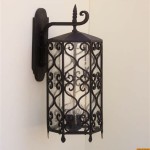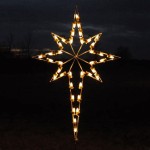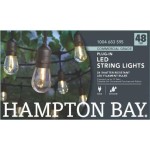Outdoor Motion Sensing Wall Lights: Illuminating Security and Convenience
Outdoor motion sensing wall lights represent a practical and increasingly popular solution for enhancing both security and convenience around residential and commercial properties. These lights are designed to activate automatically when motion is detected within their designated range, providing illumination exactly when and where it is needed. This functionality serves multiple purposes, from deterring potential intruders to simply making it easier to navigate pathways at night. Understanding the features, benefits, and considerations associated with outdoor motion sensing wall lights is crucial for making informed purchasing and installation decisions.
The core technology behind motion sensing lights revolves around the sensor itself. These sensors typically utilize one of two primary technologies: Passive Infrared (PIR) and microwave. PIR sensors detect changes in infrared radiation, which is emitted by warm objects like humans and animals. When a warm body moves within the sensor's field of view, the change in infrared radiation triggers the light. Microwave sensors, on the other hand, emit microwave signals and detect changes or disturbances in the reflected signals. These disturbances indicate movement within the sensor's range.
PIR sensors are generally more sensitive to temperature variations and may be prone to false triggers in extreme weather conditions. However, they are also less likely to be triggered by movement behind walls or other barriers. Microwave sensors are less sensitive to temperature changes but are more prone to false triggers caused by movement beyond the immediate vicinity. The choice between PIR and microwave sensors depends on the specific application and the environmental conditions of the installation location.
Beyond the core sensor technology, several other factors contribute to the performance and effectiveness of outdoor motion sensing wall lights. These factors include the range and angle of detection, the sensitivity settings, the hold time, and the type of light source used. Understanding these features allows users to tailor the lights to their specific needs and optimize their performance.
Key Point 1: Understanding the Benefits of Motion Sensing Lights
The primary benefit of outdoor motion sensing wall lights is enhanced security. By automatically illuminating areas when movement is detected, these lights deter potential intruders and make it more difficult for them to approach a property undetected. The sudden burst of light can startle intruders, causing them to abandon their plans. Furthermore, the lights provide increased visibility for security cameras, enabling them to capture clearer images and videos of any suspicious activity.
In addition to security, motion sensing lights also offer significant convenience. They illuminate pathways, driveways, and entryways, making it easier for residents and visitors to navigate these areas safely at night. This is particularly helpful for individuals carrying groceries, walking pets, or simply returning home after dark. The automatic activation eliminates the need to fumble for light switches, reducing the risk of accidents and injuries.
Energy efficiency is another key advantage of motion sensing lights. Because they only activate when motion is detected, they conserve energy compared to lights that remain on continuously. This can lead to significant savings on electricity bills over time. Moreover, the use of LED light sources further enhances energy efficiency, as LEDs consume significantly less energy than traditional incandescent or halogen bulbs.
Finally, motion sensing lights contribute to a more welcoming and aesthetically pleasing environment. They can be used to highlight architectural features, illuminate landscaping, and create a sense of warmth and security around a property. The ability to adjust the light's brightness and color temperature allows users to customize the lighting to their preferences.
Key Point 2: Factors to Consider When Choosing Motion Sensing Lights
Selecting the right outdoor motion sensing wall lights requires careful consideration of several factors. The range and angle of detection are crucial for ensuring that the lights cover the desired area. A longer range is typically needed for larger properties, while a wider angle of detection is beneficial for covering wider areas, such as driveways or patios. It is essential to choose lights with a range and angle that are appropriate for the specific application.
The sensitivity settings of the motion sensor also play a crucial role in performance. Adjustable sensitivity settings allow users to fine-tune the sensor to minimize false triggers. Higher sensitivity settings will detect smaller movements, while lower sensitivity settings will only trigger the lights when larger movements are detected. The ideal sensitivity setting depends on the environment and the potential for false triggers caused by animals, wind, or other factors.
The hold time, or the duration that the light remains on after motion is detected, is another important consideration. A longer hold time provides extended illumination, but it also consumes more energy. A shorter hold time conserves energy but may not provide sufficient illumination for all situations. The optimal hold time depends on the intended use of the lights and the desired balance between energy efficiency and convenience.
The type of light source used in the motion sensing lights also affects their performance. LED lights are generally preferred due to their energy efficiency, long lifespan, and bright illumination. However, other options, such as halogen or incandescent bulbs, may be suitable for certain applications. The choice of light source should be based on factors such as energy consumption, brightness, color temperature, and cost.
The durability and weather resistance of the lights are also critical considerations, especially for outdoor applications. The lights should be constructed from durable materials that can withstand exposure to the elements, such as rain, snow, and sunlight. They should also be rated for outdoor use, with an appropriate IP (Ingress Protection) rating to indicate their resistance to water and dust.
Key Point 3: Installation and Maintenance Best Practices
Proper installation is essential for ensuring the optimal performance and longevity of outdoor motion sensing wall lights. The lights should be installed in a location that provides the desired coverage area and is free from obstructions that could interfere with the sensor's detection range. The installation should also comply with all applicable electrical codes and regulations.
When installing motion sensing lights, it is important to consider the surrounding environment. Avoid installing the lights in areas where they may be triggered by trees, bushes, or other objects that move in the wind. Also, be mindful of potential sources of interference, such as heat vents or reflective surfaces, which could cause false triggers.
Regular maintenance is also important for ensuring the continued performance of motion sensing lights. This includes cleaning the lens of the sensor to remove dirt and debris that could impair its ability to detect motion. It is also important to periodically check the wiring and connections to ensure that they are secure and free from corrosion.
Replacing the light bulbs when they burn out is another essential maintenance task. When replacing bulbs, it is important to use the correct type and wattage to avoid damaging the fixture. LED bulbs are generally recommended due to their long lifespan and energy efficiency, but it is important to choose bulbs that are compatible with the motion sensing light fixture.
Finally, it is important to adjust the sensitivity and hold time settings as needed to optimize the performance of the lights. If the lights are triggering too frequently, the sensitivity should be reduced. If the lights are not staying on long enough, the hold time should be increased. Regular adjustments will help ensure that the lights are providing the desired level of security and convenience.
In conclusion, outdoor motion sensing wall lights offer a versatile and effective solution for enhancing security, convenience, and energy efficiency around residential and commercial properties. By understanding the features, benefits, and considerations associated with these lights, users can make informed purchasing and installation decisions that meet their specific needs and optimize their performance.

Lnc Orlan 1 Light 10 5 In Sandy Black Seeded Glass Square Cage Motion Sensor Dark Sky Outdoor Wall The Lights Department At Com

Outdoor Wall Lamp Gray With Motion Sensor Ip44 Solar Salina Lampandlight

Lnc Modern Black Motion Sensing Outdoor Sconce With Seeded Glass Shade Farmhouse 1 Light Front Door Wall Lantern 2 Pack Ev26jrhd1745dg8 The Home Depot

Outdoor Motion Sensor Led Waterproof Wall Sconce Light Bright Plus

Varennes Fixed Matt Black Pir Motion Sensor Outdoor Lantern Wall Light 60w Diy At B Q

Auraglow Dusk Till Dawn Daylight Pir Motion Detection Sensor Outdoor Wall Light Wharton Dorton Silver Led Lighting

Outdoor Wall Lights Security

Classic Outdoor Wall Lamp Black With Motion Sensor New Haven Lampandlight

Auraglow Black Arch Integrated Led Motion Sensor Pir Outdoor Wall Light Adobe Lighting

Outdoor Motion Sensor Lights Lamps Plus
Related Posts







